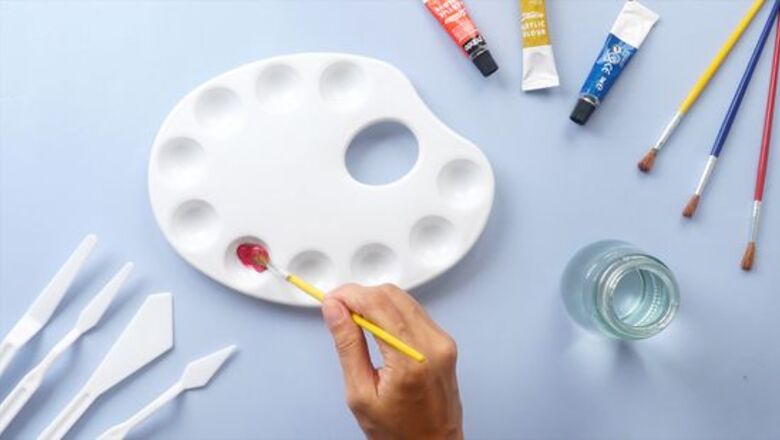
views
- Use a mixture of 20% distilled water and 80% acrylic paint for a cheap, easy way to thin paint.
- Create a mixture containing 25% thinning medium and 75% acrylic paint to increase flow and translucency.
- Try a 50/50 mix of acrylic paint and either acrylic binder or pouring medium to give your paint a consistent color and viscosity.
Thinning Your Acrylic Paints
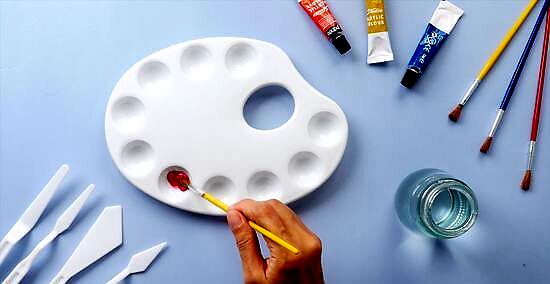
Add distilled water for the easiest and least expensive option. When you just want to slightly thin your paint, dip your brush in clean water and then mix it into the paint on your palette. If you want to thin more paint at a time, try creating a mix that’s around 20% water and 80% paint to ensure it properly adheres to the surface you’re painting without affecting the finish. Stir the water into your acrylic paints thoroughly to ensure it has a smooth texture and even color consistency. Distilled water doesn’t have any additives like tap water, so it keeps your painting project clean.
Mix in thinning medium to increase the paint's flow and transparency. Thinning medium, or flow medium, makes paint easier to work with but it may also make the color more transparent. Some thinning mediums are ready to use right out of the bottle, while others need to be diluted first, so check the directions on the package you have. Use a mix of up to 25% thinning medium and 75% paint to help it spread easily over the surface. EXPERT TIP Kelly Medford Kelly Medford Professional Painter Kelly Medford is an American painter based in Rome, Italy. She studied classical painting, drawing and printmaking both in the U.S. and in Italy. She works primarily en plein air on the streets of Rome, and also travels for private international collectors on commission. She founded Sketching Rome Tours in 2012 where she teaches sketchbook journaling to visitors of Rome. Kelly is a graduate of the Florence Academy of Art. Kelly Medford Kelly Medford Professional Painter Use water or a gel medium for different results. Gel gives the paint more body, but it also makes the paint more transparent. Water makes the paint thinner, but it can also make it washy and runny. Using a higher ratio of medium to paint can weaken the stability of our paint and prevent it from sticking properly. If you’re using acrylics for airbrushing, then use airbrush thinning medium specifically made to use with those tools.

Stir in acrylic binder to give paint colors more sheen and radiance. Acrylic binder is the compound that already mixes the pigment in your paint, but adding extra can help improve the flow. Stir together equal portions of the binder and the acrylics you’re thinning until it has a consistent color and viscosity before applying it to the surface you’re painting. Using more than a 50/50 mix of acrylic binder and paint can dilute the intensity of the colors.
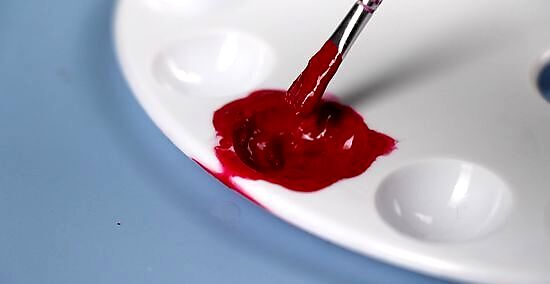
Use a pouring medium if you plan on pour painting. Pouring medium reduces the viscosity of your paint so it flows easily when you pour it onto the surface. Typically, you’ll mix equal parts pouring medium and paint together for the proper consistency, but follow the directions on the package because they may vary in between brands. Pouring medium doesn’t affect the color transparency, so the paint will still have a high gloss appearance once it’s dry. Pouring medium may increase the drying time for your acrylics.
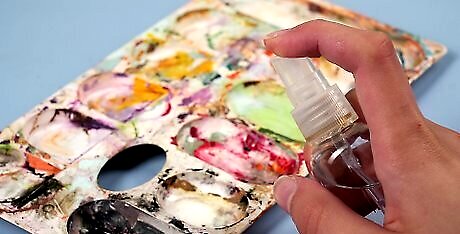
Try spraying diluted rubbing alcohol to revive and thin dried-out paint. Combine an equal mix of rubbing alcohol and distilled water in a small spray bottle. If you have dried paint on the surface or on your palette, lightly spritz it with the alcohol solution and let it sit for about 1 minute. Then, work the paint with your brush or a palette knife to spread it out and continue working with it. Rubbing alcohol helps break down the polymers inside acrylic paints so it’s less viscous. Adding rubbing alcohol directly to acrylic paints could prevent it from adhering properly to the surface. If your acrylic paints have hardened completely on a palette, adding alcohol may not work to revive them.
Using Thinned Acrylic Paint
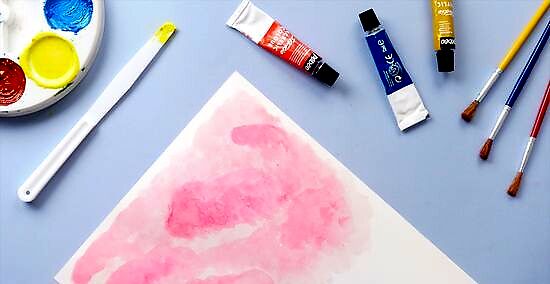
Create an acrylic wash to mimic the look of watercolors. Use a mix that’s about equal parts distilled water and paint so the color has a little bit of translucency. Spread the paint in a thin layer over your painting surface. As you apply the paint, the background underneath it will still be visible through the color tint. Overlap areas where you already applied a wash to help darken the tone even more. If you want to apply a wash over a spot you already painted, wait for it to dry first. As acrylic paints dry, they become water-insoluble, so they won’t run or look muddy when you’re done. If the painting surface is porous, like untreated canvas or wood, then the wash may stain the material and leave a duller color behind instead of a vibrant or glossy finish. Be careful not to apply too much thinned paint at once because it could leave drips or streaks if you move the painting surface around.

Make thin lines with diluted acrylic paint and a long-bristled paintbrush. As you thin acrylic paint, it flows over the painting surface more easily and makes a cleaner line. Twist the brush in the thinned paint to load the bristles evenly. Gently drag the tips of the bristles over the surface to create a thin, wispy line that’s great for small details and marks in your finished painting. Avoid pressing the bristles down against the canvas with a lot of force because you could cause them to fray and you’ll create a thicker line. Practice making thin lines on a scrap piece of paper or canvas before trying them on your actual painting.

Apply translucent thinned paint over finished areas to add a glaze. Glazes are translucent colors on top of painted spots that give the area more of a sheen. Combine enough thinning medium with your acrylic paint until it flows easily and looks translucent. Then, spread a thin layer of paint over the section you want to make pop. As the glaze dries, it will make a shiny spot with the hue of the original paint color.

Tape off sections of your painting to form hard contrasting edges. If you want to create a definitive edge without drips or splashes, then place a strip of masking tape down on the surface. Press the tape down firmly so its edges are flat against the surface. Then, apply your thinned paint up to the edge of the tape. Once your acrylic paint dries, slowly peel back the tape to reveal the edge. Be careful not to quickly tear the tape off of your painting because you could damage the layers underneath it.














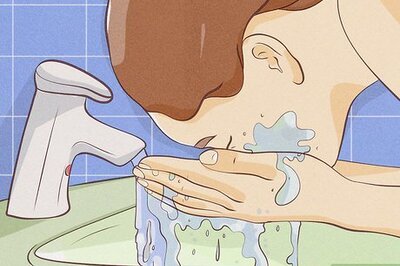


Comments
0 comment